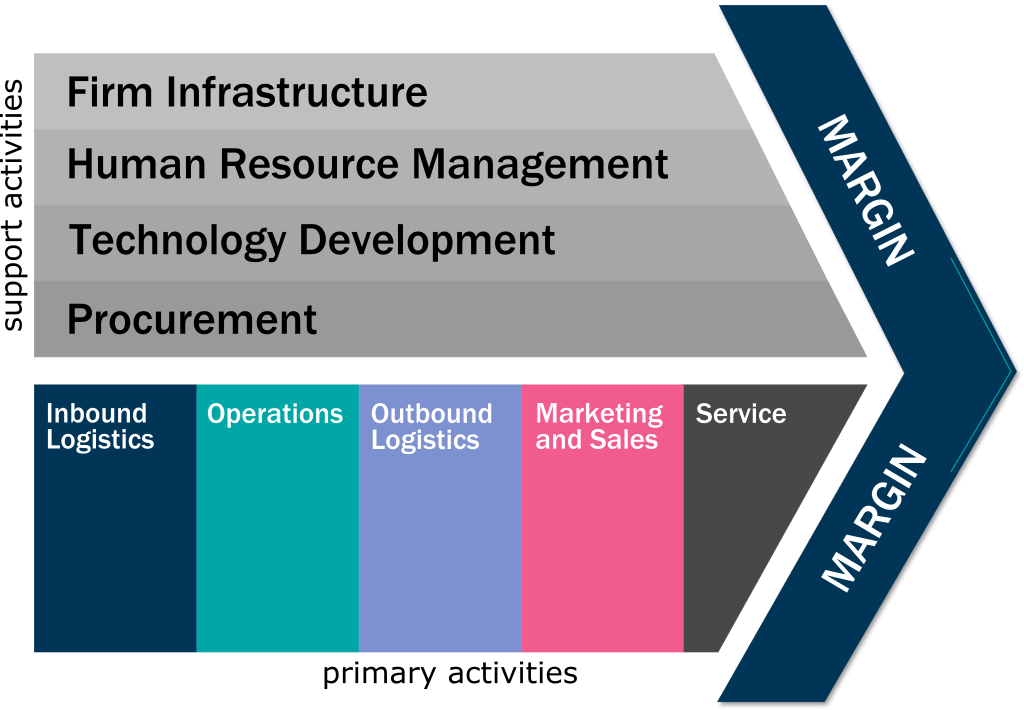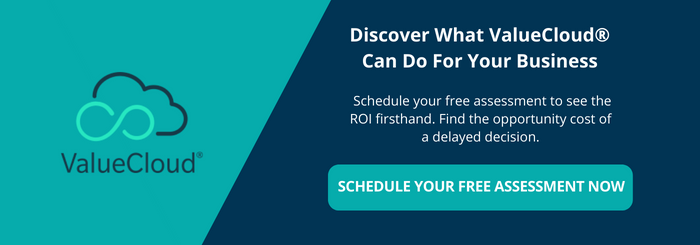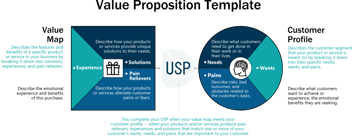Understanding the Value Chain Concept in Marketing

Companies are in constant competition to keep their current customers and win new ones. That’s why every organization needs to find ways to offer consumers more value. To grow despite the competition, businesses like yours need to perform value marketing, showing customers the benefits they’ll receive from your product.
But how do you identify that value? That’s where value chain analysis comes in. Keep reading to learn what value chains are, how to analyze your value chain, and how to use your value chain in marketing.
Value Chains Explained
A value chain is the collection of steps a company takes to convert products from concepts to market-ready solutions. The company’s goal is to find processes that set it apart from competitors. The company implements these processes to build value and sell its solutions and services for a profit. Each step of the value chain is supposed to build more value for the company than it costs to perform. That gap is where profit is found.
Every company has a value chain. Only some have taken the time to actually study these chains, however. The purpose of studying a value chain is to help a company make money by identifying strengths and weaknesses in its current business models. As a result, it can become more efficient by reducing unnecessary costs and producing more value. Essentially, studying your value chain can help make your company more profitable by increasing income and reducing expenses.
Components of a Value Chain
While every company’s individual value chain will look different, they all can be broken down into primary and secondary activities. Each step of an individual value chain falls under one or more of these activities. Understanding how these activities are linked can help you examine your company’s actual sources of value.
Primary Activities
Value chains have five primary activities. These are the main activities that capture value — without them, a company can’t actually make a profit. These five activities are:
- Inbound logistics: This is the management and acquisition of a company’s raw materials, including supplier relationship management.
- Operations: This is the process of converting raw materials into a completed product or service.
- Outbound logistics: This is the distribution of a product or service to customers, such as shipping physical products or providing services at a physical location.
- Marketing and sales: This includes targeting customers to build demand and make sales through value selling.
- Service: This encompasses things that generally enhance the consumer experience, such as offering repairs, refunds, and customer service.
These five activities as a whole are intended to create value for the company that’s greater than the cost of performing them. As a result, they lead to profit for the business. For example, operations convert raw materials into the products customers want to buy, raising their value. Meanwhile, marketing and sales can convince more customers to buy products at higher price points, increasing the value of each sale.
Secondary Activities
After the primary activities, companies consider secondary activities in their value chain. These four activities include:
- Procurement: This is the acquisition of resources for the business, including negotiating with vendors. It’s deeply connected to inbound logistics.
- Human resources: This includes hiring and developing employees to fulfill business needs. Human resource management underpins all other activities.
- Infrastructure: Infrastructure includes all the systems and structures the company needs to function, from physical property to accounting and legal operations.
- Technological development: This includes the design and development of techniques, processes, and tools to improve the business. It’s heavily connected to all the primary activities for companies that are working to improve.
These four activities are intended to support the primary activities of a company. They don’t generate value on their own, but they multiply the value companies receive from primary activities.
DecisionLink ValueCloud will boost business results across sales, marketing, value management, and customer success. Schedule your free assessment now.
For instance, excellent procurement can decrease the cost of operations. Similarly, infrastructure can improve inbound and outbound logistics, leading to a higher profit margin overall.

Benefits of Value Chains
Value chains already exist — you don’t need to implement a value chain because it’s already present. However, you can manage and study your value chain. Take control and see many different benefits, including:
- Improved product planning and development: Provide a clear view of your company’s competitive advantages.
- More effective guided proposals: Provide information about your actual costs.
- Standardized processes: Use the most efficient methods to streamline systems and operations.
- Reduced costs across the value chain: Identify unnecessary expenses.
- Improved profitability: Capture more value at each step.
Examples of Value Chains
Every company has a value chain in place. How these chains break down depends on the kind of goods or services a company provides. Here are two examples of standard value chains.
Car Manufacturer Value Chain Example
A car manufacturer’s mission is to build and sell as many cars as possible. Any manufacturer is primarily a goods-based business, so most manufacturing value chains will look like this:
- Inbound logistics: Acquiring and storing parts to make cars.
- Operations: Putting cars together.
- Outbound logistics: Shipping cars to dealerships and storing unsold cars.
- Marketing and sales: Running ads, sales, and performing product placement to boost the brand’s reputation.
- Services: Offering warranties, repairs, and support to customers who have bought cars.
Lawn Care Service Value Chain Example
A lawn care service is an entirely service-based business. That means that the operations and outbound logistics elements look a little different from product-based companies.
- Inbound logistics: Acquiring and storing lawn chemicals and equipment to perform lawn care services.
- Operations: Caring for people’s lawns.
- Outbound logistics: Transporting lawncare tools to and from customer homes and employing experienced lawn care professionals.
- Marketing and sales: Marketing services to local customers, such as by offering discounts for referrals.
- Services: Offering free consultations, extra services for loyal customers, and doing top-quality work in general.
Value Chain Analysis
Value chain analysis is the process of studying your company’s value chain to find its strongest competitive advantages. When you know what links in your value chain generate the most (and least) value, you know where to focus your attention. You can protect high-value elements from change while working to improve the value you receive from struggling links.
A complete value chain analysis needs to take into account every element of your company’s chain. It takes time and research, but it pays dividends. Here’s how to properly analyze your own company’s value chain.
Value Chain Analysis Steps
There are three steps involved in value chain analysis. You can apply these steps to any kind of business.
1. Determine Your Primary and Support Activities
While the examples above demonstrate general value chain activities, you should go into depth. You can break down every action your company performs and determine whether it’s a primary or secondary activity. Remember, primary activities directly create value, while secondary activities increase the value of primary activities.
2. Analyze the Value and Cost of Each Activity
Analyzing cost is straightforward, though it takes time. You’ll need to determine the cost of:
- Materials involved in each step (i.e., the purchase of raw materials, the price of running ads, the cost of shipping)
- Labor required to achieve each step (i.e., the staff and payroll required to accomplish each activity)
- Incidental expenses generated by each step (i.e., sales fees, electrical bills for the marketing office, tariffs, or fulfilling warranties)
The goal is to determine the total cost of each activity. Don’t leave out any money spent by your company.
Next, analyze each activity to see what value it provides to consumers and your business. This can be obvious, like the conversion of raw wood into a dining table. It can also be more abstract, like providing better customer service or safer shipping.
3. Identify Chances to Improve a Competitive Advantage.
Finally, look for ways to grab a competitive advantage. Are there unnecessarily high costs? Look for ways to lower them, like switching vendors to a nearer or less expensive alternative. Is there a way to add additional value to your product? Research ways to do so without significantly increasing costs.
Once you’ve performed this analysis, you can start making changes. You’ll likely find places where you can make minor adjustments and either dramatically cut costs or improve value. Make those changes first, then go through the rest of your list. These refinements may take some time, but you’ll be improving your company’s results the entire time.
How to Use a Value Chain in Marketing
Marketing is one of the primary activities in every value chain. You can improve your marketing approach by taking a value-oriented approach.
- Generate demand: Marketing adds value by generating demand for a product. If consumers don’t know about a product, they can’t buy it. If they don’t know they have a problem, they can’t look for solutions. When you market your company, remind customers about their pain points and position your products as the solution, generating demand and adding value.
- Build a strong brand: A company’s brand is just as much of an asset as its infrastructure and inventory. When you build a consistent, appealing brand through your marketing efforts, you’re adding value to your company through customer loyalty and name recognition.
- Demonstrate value: Once you understand how your company produces value, you can communicate that to your audience. Value has nothing to do with cost; it’s based on your customer’s perception of a benefit. Does your company prioritize speed? It can provide value by delivering products quickly. Highlight this value in your marketing materials.
Take the Time to Analyze Your Value Chain
You already have a value chain. You can ignore it — or you can study and learn from it. If you want to grow your business, integrating an understanding of your value chain in marketing is a smart choice. You can use this knowledge to perform better value marketing, keeping your customers engaged and loyal.
DecisionLink is a leader in value management and marketing. If you want to learn how DecisionLink can help you perform value chain analysis and start value selling, schedule your free customer value management assessment today. Or if you want to learn more about customer value management, get your copy of our eBook “Unleashing Customer Value: Your Guide to Agile Value Management.”

 ValueCloud
ValueCloud
.png?width=118&height=76&name=Rectangle%20(3).png) ValueCloud Ignite
ValueCloud Ignite
.png?width=92&height=92&name=Rectangle%20(4).png) Free Assessment
Free Assessment
.png?width=100&height=100&name=Rectangle%20(5).png) Watch a Demo
Watch a Demo
.png?width=82&height=96&name=Rectangle%20(6).png) Value Calculator
Value Calculator

.png?width=62&height=51&name=Group%2010%20(1).png) Marketing
Marketing
 Sales
Sales
 Customer Success
Customer Success
 Engage Prospects
Engage Prospects
 Win Deals Faster
Win Deals Faster
 Retain Customers
Retain Customers
.png?width=62&height=62&name=Rectangle%20(8).png) Adopt and Scale
Adopt and Scale
.png?width=54&height=54&name=Rectangle%20(9).png) Cybersecurity
Cybersecurity
 Healthcare
Healthcare
.png?width=54&height=54&name=Rectangle%20(10).png) IT & Software
IT & Software




